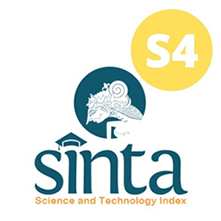An Improved Design of Flat Panel Detector with Phototransistor PH101 Analysis of The Tube Voltage Setting
Abstract
The intensity and quality of the X-Rays a patient receives is determined by the exposure factor. Voltage (kV), Current (mA), Time (seconds), and tube-to-film distance (FFD) are exposure factors that can be controlled and determined. The key factor that can determine the quality of X-Rays is the tube voltage (kV) which affects the X-Rays to penetrate objects. The purpose of this research is to improve image quality and relatively affordable manufacturing costs by obtaining the difference in the detector catch value between dark and light by utilizing the response of the PH101 phototransistor sensor. The contribution of this research is that the system can display grayscale and numeric on a 16x16 pixel matrix using the Matrix Laboratory (MATLAB) application. This research can convert images taken from analog data after measuring the phototransistor PH101 on X-Rays. The measurement settings used are 50, 55, 60, and 70kV, with a tube current of 40 mA and an irradiation time of 1 second. The measurement results show that the Flat Panel Detector Design can respond to differences in doses and objects. This research shows that a Flat Panel Detector and a Phototransistor PH101 sensor have been successfully made which can be used to capture X-Rays so that the black level of the film can be determined.

This work is licensed under a Creative Commons Attribution-ShareAlike 4.0 International License.
Authors who publish with this journal agree to the following terms:
- Authors retain copyright and grant the journal right of first publication with the work simultaneously licensed under a Creative Commons Attribution License that allows others to share the work with an acknowledgement of the work's authorship and initial publication in this journal.
- Authors are able to enter into separate, additional contractual arrangements for the non-exclusive distribution of the journal's published version of the work (e.g., post it to an institutional repository or publish it in a book), with an acknowledgement of its initial publication in this journal.
- Authors are permitted and encouraged to post their work online (e.g., in institutional repositories or on their website) prior to and during the submission process, as it can lead to productive exchanges, as well as earlier and greater citation of published work (See The Effect of Open Access).











